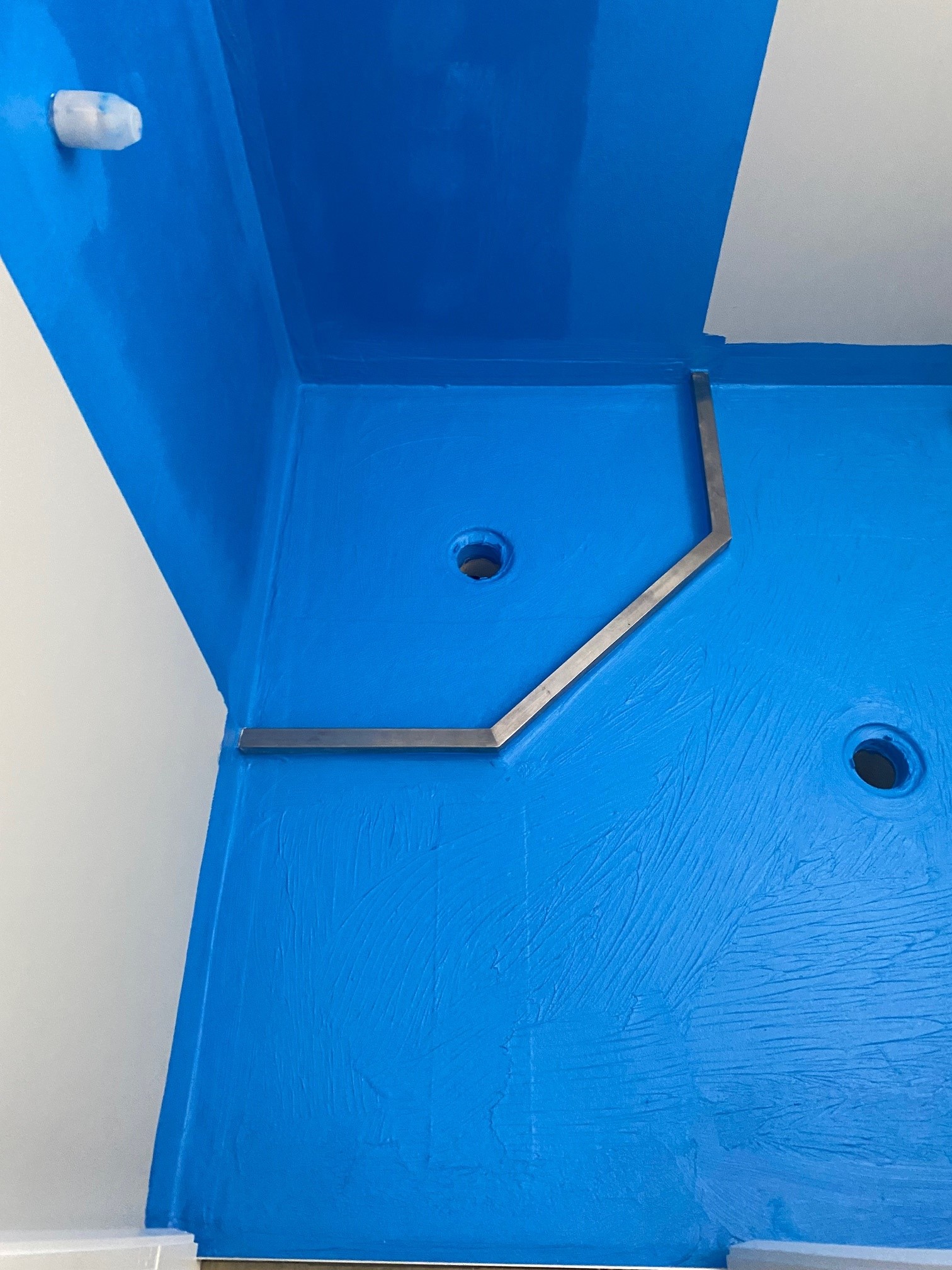4. Lack of Proper Sealing:
Penetrations such as pipes and drains require special attention during waterproofing. Failing to properly detail these penetrations can create potential entry points for water, undermining the effectiveness of the waterproofing system. Using appropriate sealants and techniques to seal all penetrations is crucial for a watertight internal wet area.
5. No slope/fall:
A very common mistake often made in wet area waterproofing is not providing a sufficient fall toward a drainage point both at the surface and sub-surface level. Without a proper fall, ponded water can result in unhealthy or dangerous conditions, and have a detrimental impact on the installed membrane system.
6. Neglecting corners and joints:
Corners and joints are vulnerable areas where water can easily seep through if not properly waterproofed. It is important that all corners and junctions are appropriately detailed to ensure the performance of the overall waterproofing system.
7. Rushing the Curing Process:
To ensure long-term performance, it is critical to allow the membrane to properly cure before the installation of any overburden finishes. Rushing through this process can compromise the integrity of the waterproofing system. It is important to follow the recommended curing time provided by the manufacturer to ensure maximum performance.
8. Lack of Quality Control:
A common mistake is neglecting quality control during the waterproofing process. Insufficient checks, overlooking details, or rushing through the application can result in overlooked errors and compromised waterproofing. Implementing a thorough quality control process, including an Inspection Test Plan (ITP), completed in real-time and thorough post-completion testing, will mitigate application-related risk and promote longevity and effectiveness for the overall waterproofing system.
 Image 2: Example of a good internal wet area application.
Image 2: Example of a good internal wet area application.
 Waterproofing
Internal vs External Waterproofing Membranes - What are 3 Key Considerations?
Waterproofing
Internal vs External Waterproofing Membranes - What are 3 Key Considerations?
 Waterproofing
The Benefits of Choosing PVC Waterproofing Membranes
Waterproofing
The Benefits of Choosing PVC Waterproofing Membranes
